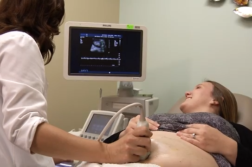SAN DIEGO, Calif. (Ivanhoe Newswire) — Infertility impacts millions of people worldwide. In fact, one in six people will have difficulty having a baby. Trouble conceiving can be caused by many reasons, including age, health, obesity, and environmental factors. Many couples struggling with infertility turn to invitro fertilization, or IVF. More than 86,000 infants born in 2021 were conceived this way. But the process is complex, costly and the overall birth rate after IVF is only 20-40% in females younger than 40 years old. Now, a revolutionary new study could revolutionize IVF treatments.
From sleep time to feeding time and all the times in-between… it’s moments like these are a dream come true for hundreds of thousands of new moms and dads each year. But getting to this point can be a long journey for some couples.
“Since the birth of the first IVF baby in 1978, we’ve made great strides in the science of fertility care, especially in IVF. But I do think that it’s often a misconception that this is going to be the solve all,” explained H. Irene Su, MD, professor at the Department of Obstetrics, Gynecology, and Reproductive Services at the UC San Diego School of Medicine.
A major challenge in IVF is identifying which embryos have the best chance of a successful pregnancy.
“On average, people in the U.S. go through about two to three cycles of IVF,” Dr. Su said.
Right now, embryos undergo genetic testing which requires a biopsy and does not fully predict success. A new method developed out of the UC San Diego School of Medicine works by detecting small particles of genetic material called ExRNA’s that are left behind in the petri dishes that the embryos are grown in. Researchers used the data to train a machine learning model to predict the embryo’s appearance which predict success.
“The pattern of RNA varies between embryos that stop growing versus the embryos that continue to grow,” explained Dr. Su.
And that will help doctors determine which ones will have the best chance to grow into beautiful babies.
Researchers emphasize that further research is needed to confirm whether their ExRNA based test can directly predict successful IVF outcomes, like live births. While the test can accurately predict embryo morphology, a known indicator of IVF success, a direct link to positive outcomes must still be established. Once validated, this test could streamline the IVF process, making it more efficient and less stressful for patients.
Contributors to this news report include: Marsha Lewis, Producer; Roque Correa, Editor.
To receive a free weekly e-mail on medical breakthroughs from Ivanhoe, sign up at: http://www.ivanhoe.com/ftk
Sources:
https://www.who.int/health-topics/infertility#tab=tab_1
FOR MORE INFORMATION, PLEASE CONTACT:
Miles Martin
Senior Communications and Media Relations Manager at
UC San Diego Health Services
(858) 255-1195
If this story or any other Ivanhoe story has impacted your life or prompted you or someone you know to seek or change treatments, please let us know by contacting Marjorie Bekaert Thomas at mthomas@ivanhoe.com



